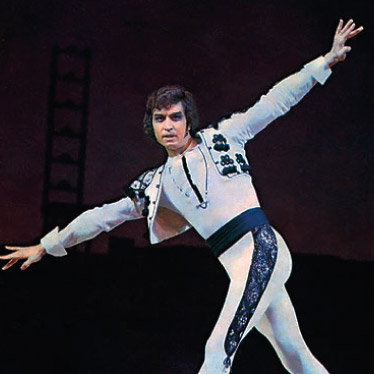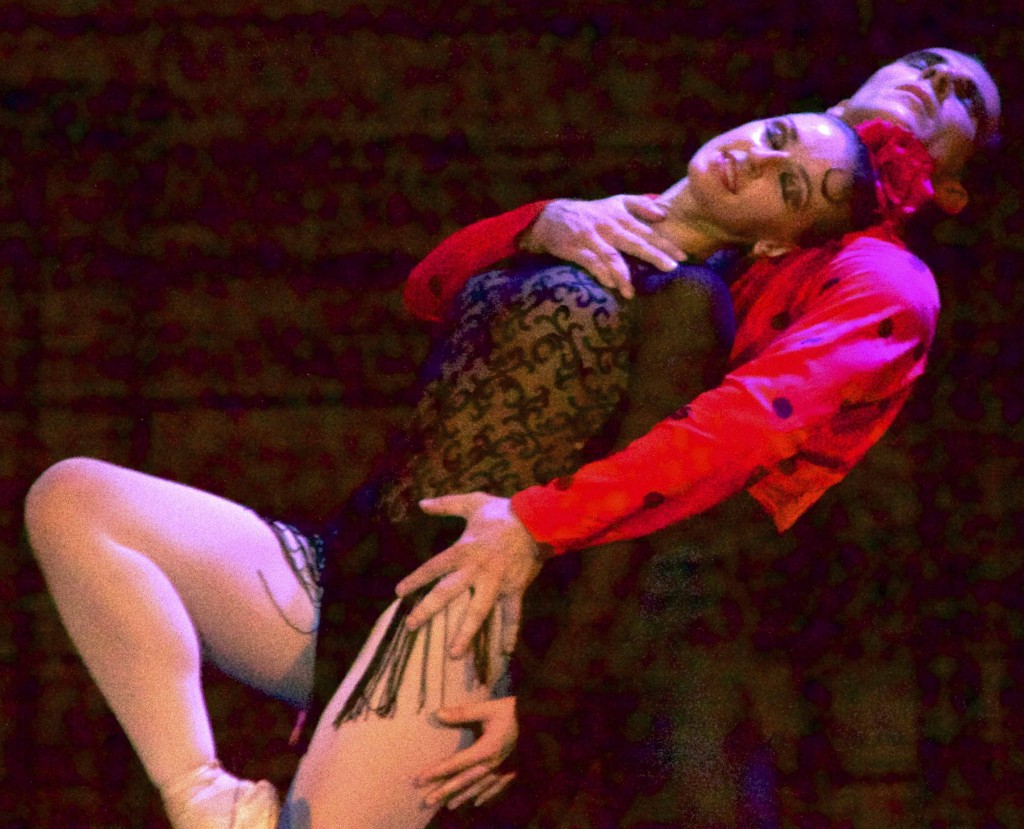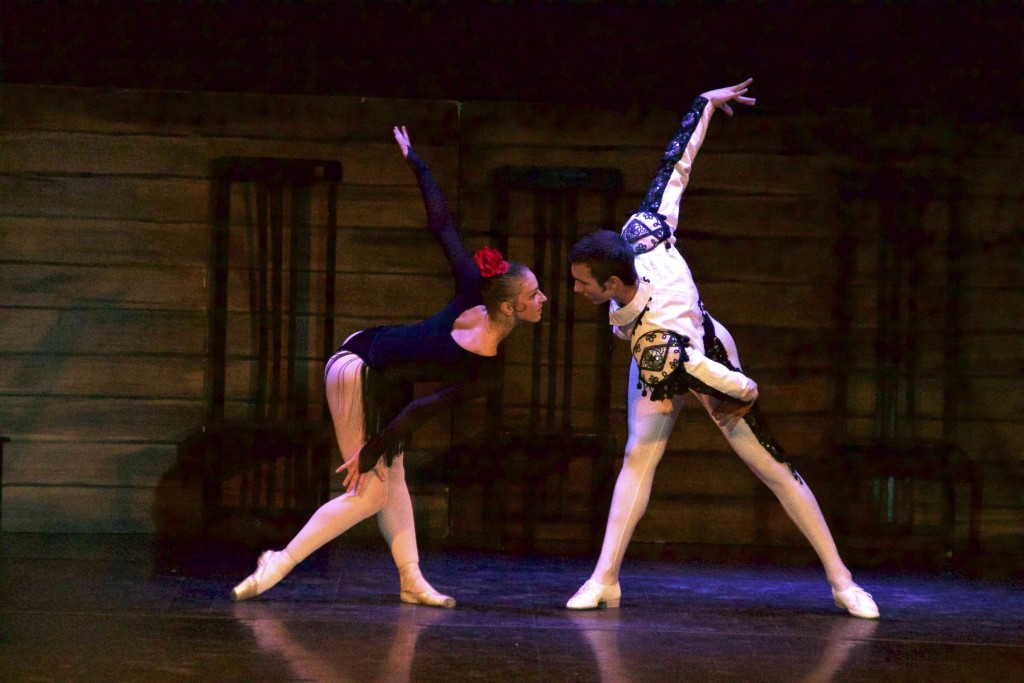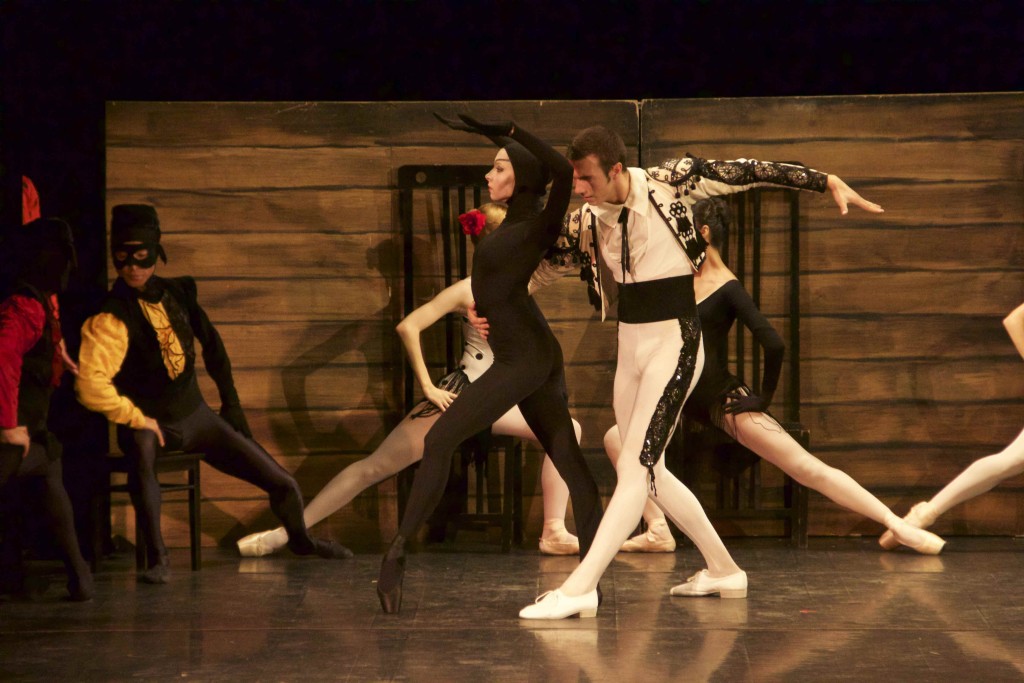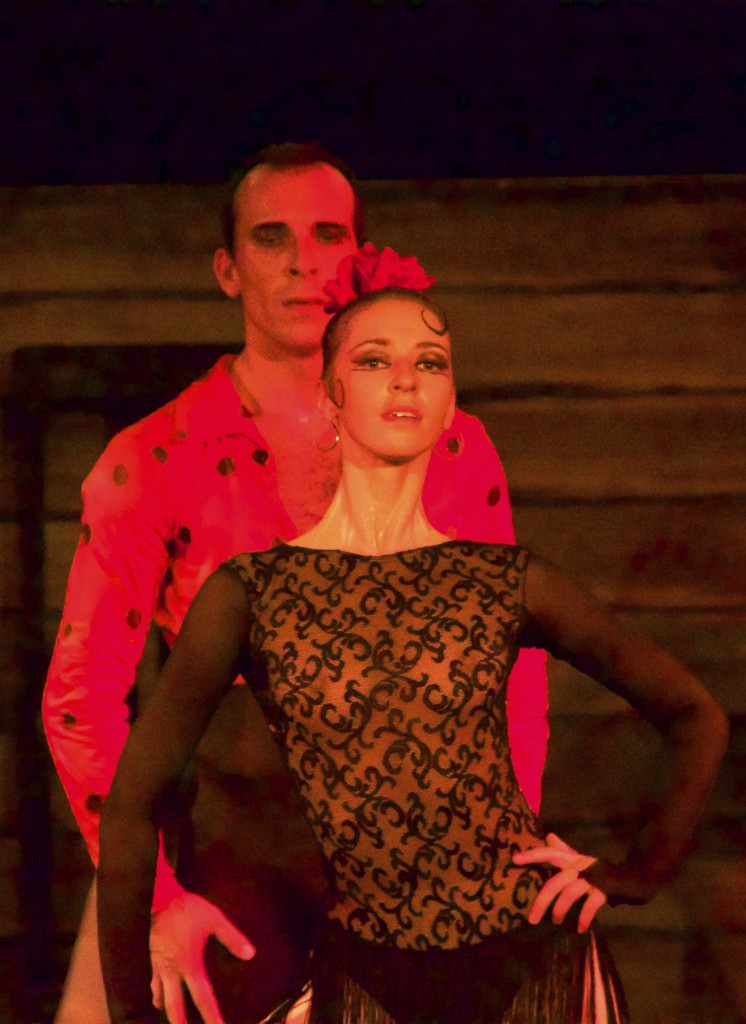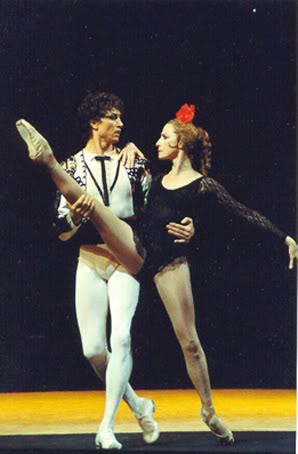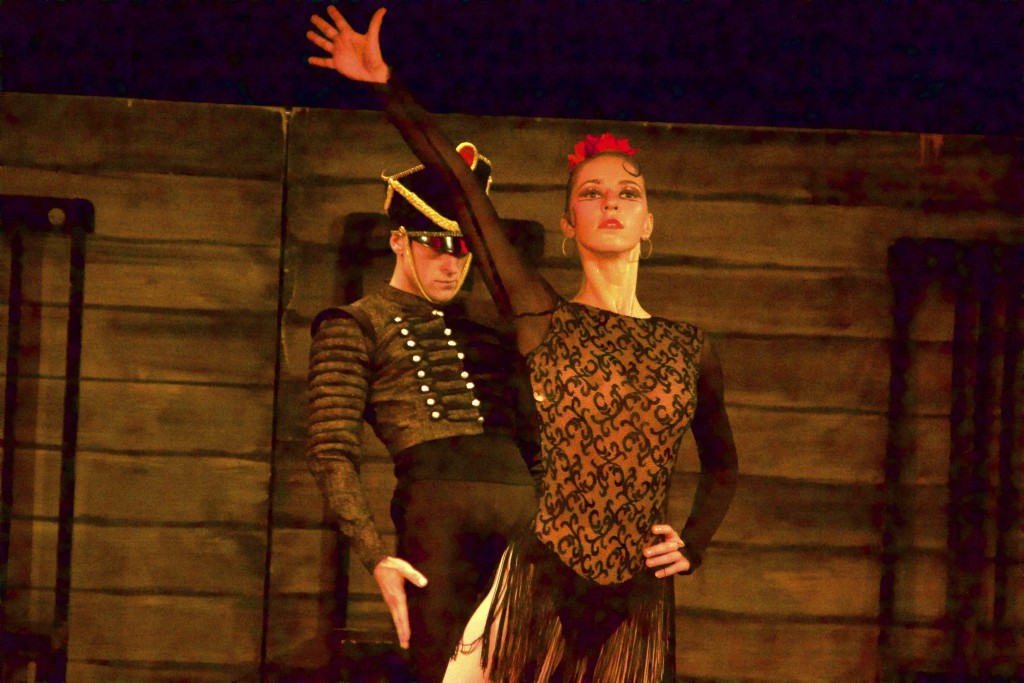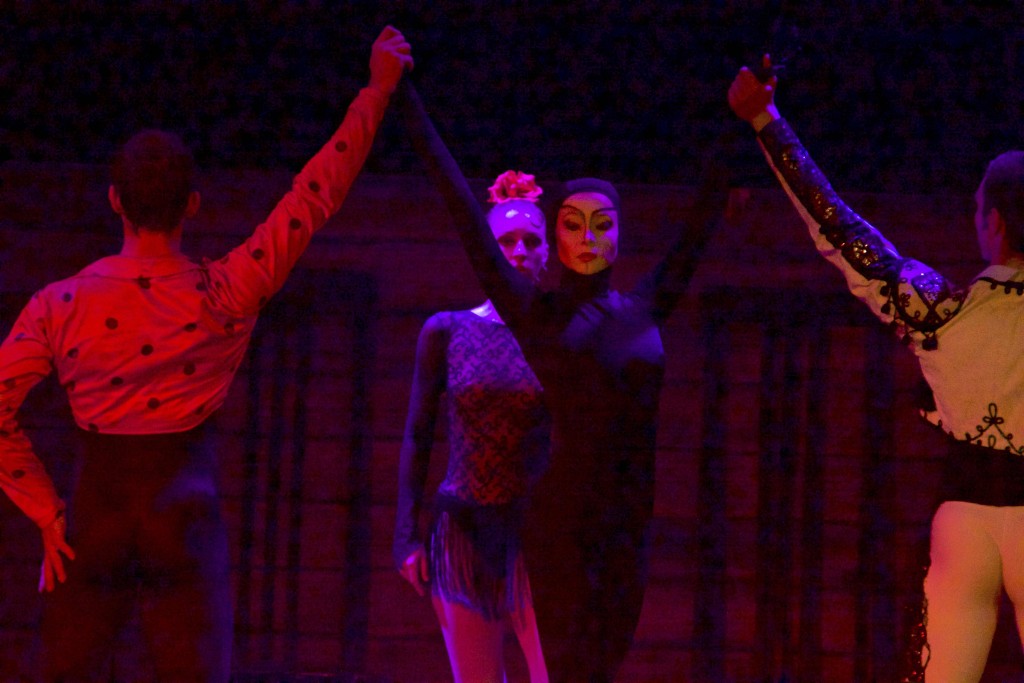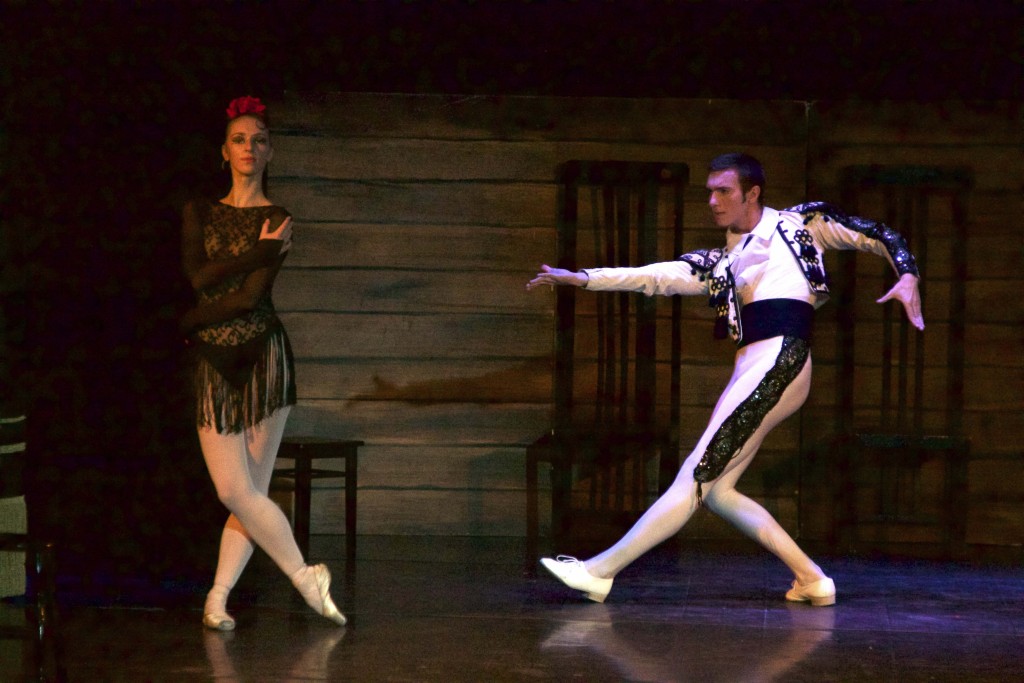Carmen Suita
Alberto Alonso’s
Carmen Suite
Carmen Suite is a one-act ballet created in 1967 by Cuban choreographer Alberto Alonso, on music written by Russian composer Rodion Shchedrin. The music, taken from the opera Carmen by Georges Bizet and arranged for strings and percussion, is not a 19th-century pastiche but rather «a creative meeting of the minds,» as Shchedrin put it, with Bizet’s melodies reclothed in a variety of fresh instrumental colors (including the frequent use of percussion), set to new rhythms and often phrased with a great deal of sly wit.
The idea for Carmen Suite originated with Shchedrin’s wife, Bolshoi Theater ballerina Maya Plisetskaya. In 1966, she asked composer Alberto Alonso, who was touring Moscow with the Ballet Nacional de Cuba, to compose a ballet on the story of Carmen. Alonso developed the libretto and worked with Ballet Nacional dancers on the choreography, then flew to Moscow to teach the work to Plisetskaya. Shchedrin watched her initial rehearsals with Alonso and agreed to write music for the ballet.
Initially banned by the Soviet hierarchy as «disrespectful» to the opera for precisely these qualities, the ballet has since become Shchedrin’s best-known work and has remained popular in the West as what reviewer James Sanderson of allmusic.com calls «an iconoclastic but highly entertaining retelling of Bizet’s opera.»
Structure
The ballet is in one act containing 13 dance numbers:
I. Introduction: Andante assai
II. Dance: Allegro
III. First Intermezzo: Allegro moderato — Andante moderato — (atttacca:) IV. Changing of the Guard: Moderato
V. Carmen’s Entrance and Habanera: Allegro moderato — Quasi andante VI. Scene: Allegro moderato — Tempo precedente — Andante assai
VII. Second Intermezzo: Larghetto
VIII. Bolero: Allegro vivo
IX. Torero: Moderato con stoltezza
X. Torero and Carmen: Lento — Tempo I
XI. Adagio: Andante moderato — Adagio
XII. Fortune-Telling: Andantino — Andante assai
XIII. Finale: Allegro — Tempo precedente — Andante assai
Instrumentation
A standard string orchestra of violins, violas, cellos, double bases is augmented by a percussion battery of four members, who play the following:
Player 1: marimba, vibraphone, castanets, three cowbells, four bongos, bells, snare drum, guiro
Player 2: vibraphone, marimba, snare drum, tambourine, two woodblocks, claves, triangle, guiro
Player 3: hand bells, crot, maracas, whip, snare drum, choclo, guiro, three tplbl, bass drum, tam-tam, snare drum, triangle Player 4: cymbals, bass drum, tam-tam, hi-hat, triangle, tambourine, tom-tom, timpani
Two factors influenced Shchedrin in choosing this instrumentation. The first, he said in an interview with BBC Music Magazine, was that, «to be [as] totally far [as possible]» from Bizet’s scoring for the opera, he wanted an ensemble «without brass and woodwind … that gave me many possibilities» for timbral vareity. The second was the high level of string and percussion players then available in the Bolshoi orchestra.
Roles
Carmen, A Gypsy woman
Don José, Corporal of Dragoons Escamillo, A bullfighter (toreador) Zúñiga, Captain of Dragoons
Fate
Magistrate
Synopsis
Place: Seville, Spain, and surrounding hills
Time: Around 1820
Alonso’s scenario centers on Carmen, Don José and the bullfighter Escamillo. Carmen is a passionate, free-spirited woman in contrast to the temperamental and fickle Don José. Fate, a ballerina dressed in black and a representation of Carmen’s alter ego, tells Carmen’s fortune with a deck of cards. A fight with tobacco dealers leads to Carmen’s arrest by Captain Zúñiga. In jail, she seduces Don José and convinces him to release her from jail. Carmen is subsequently caught in a love triangle between Don José and popular bullfighter Escamillo.
Boris Messerer’s sets included a mock bullring which symbolizes life, uniting the bullfight and Carmen’s destiny in a sinister personage. Masked spectators and a uniformed judge represent society’s disapproval for the unconventional behavior of Carmen and her lovers. Fate reappears in the final act playing the role of a bull and the three main characters meet in the arena. Carmen dances alternatively with Fate, Escamillo and Don José until she is stabbed. She dies caressing Don José’s face, revealing him as the assassin.
